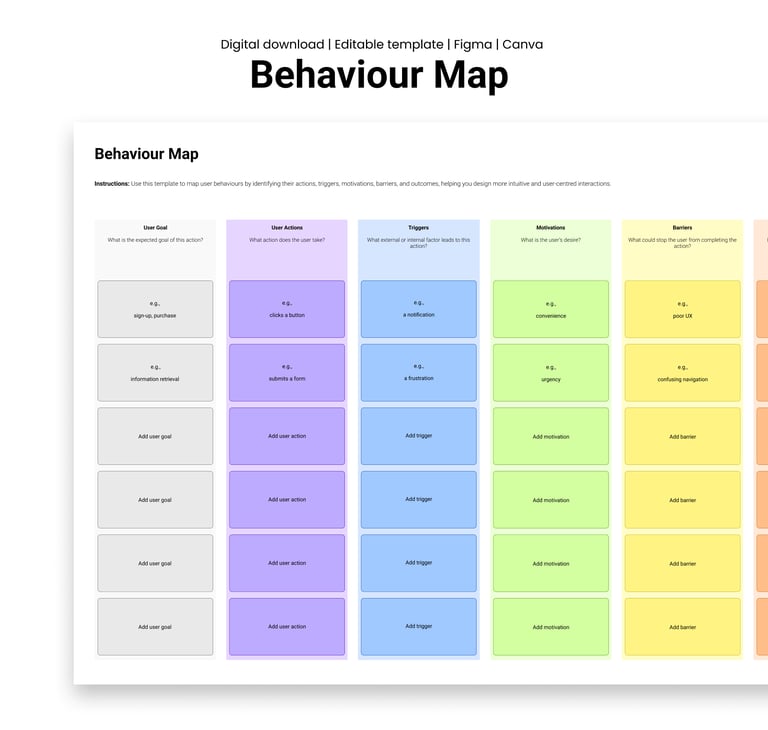How to analyse touchpoint effectiveness in multi-channel strategies
Find practical methods for identifying what’s working, what’s not, and how to align experiences across channels.
INTERACTION DESIGN


These days, customers don’t stick to one channel of engagement with brands; they jump between websites, emails, social media apps, and even in-store visits. That’s the reality of a multi-channel strategy. Not every interaction adds value, though; some encounters grow client trust while others create friction and even confusion. Analysing touchpoint effectiveness within your multi-channel strategies then becomes essential. Let’s get into how to analyse touchpoint effectiveness so you can make smarter decisions and build a more consistent brand experience, no matter the channel.
What are customer touchpoints?
A touchpoint is any moment a customer interacts with your brand. It could be before, during, or after they buy something, or even if they never buy at all. Popular examples include a website homepage, email newsletters, social media posts, support chat, onboarding flows, in-store experiences, etc. Although each of these experiences may be unique, they form the building blocks of how someone feels about your brand and make up the customer journey. So, if one is confusing or inconsistent, it can throw the whole experience off.
Why you should measure touchpoint effectiveness
Analysing your touchpoints' effectiveness is important because it helps you optimise the user experience and business outcomes. It can aid a brand in the following ways:
Smart resource allocation: Instead of spreading resources across every channel, you’ll focus on the ones that work
Friction reduction: You can easily find and resolve complaints and drop-off points in your customer journey
Brand consistency: It ensures your brand messaging and experience remain the same regardless of the channel
Customer loyalty: When customers experience that togetherness, they are more likely to stick around
Methods for analysing touchpoint effectiveness
Map your customer journey: Your customer journey map should clearly show how someone moves through your experience. Then, list all key touchpoints, from awareness to decision-making. This ensures that you spot high-impact points, gaps in your communication, and get alignment across teams.
Use quantitative data: Numbers are a solid way to see the big picture, so make sure you're tracking essential metrics such as click-through rates, drop-off rates, time spent on pages, and conversion metrics per channel. You can use tools like Google Analytics, Mixpanel, or basic dash-boarding tools to spot patterns.
Gather qualitative feedback: Data will tell you what is happening but to understand why, you have to go to the source. By using qualitative tools like surveys, usability tests, or user interviews, endeavour to talk to people from different segments, like new users, power users, customers who dropped off, etc. Feedback on emotions and effort can highlight hidden pain points.
Work cross-functionally: Combine data from user experience, customer experience, marketing, and product. Touchpoints aren’t owned by one team; everyone is involved in the customer journey. Bring those voices together and share insights.
Tools and metrics for analysing touchpoint effectiveness
Touchpoint scorecards: Create a simple scorecard for major touchpoints. Score based on factors like clarity and usability, engagement or conversion, brand tone alignment, and customer satisfaction. From this, you can prioritise which ones need fixing or testing.
Customer experience metrics: Some tested-and-true metrics include:
NPS (Net Promoter Score) - How likely someone is to recommend you
CSAT (Customer Satisfaction Score) - Quick satisfaction checks post-interaction
CES (Customer Effort Score) - How easy an experience was
Behavioural tools: Visual analysis tools such as Heatmaps or funnel analysis to find drop-offs can show you exactly what users are doing and for how long. Through such insights, it is possible to make safe assumptions on why users are behaving a certain way or taking certain actions when interacting with touchpoints.
What next?
Once you have done your analysis, it’s time to act. Do the following:
Prioritise by Impact: Use a 2×2 matrix of touchpoint impact vs effectiveness, then focus on high-impact, low-effectiveness areas first (e.g. onboarding or website checkout).
Fix or drop weak touchpoints: Some touchpoints may need tweaking, and others might require a total overhaul. Discover where each fall and act accordingly.
Iterate and test: No touchpoint is ever completely done. Keep learning from your data and users to evolve and meet demands.
Maintain consistency: Ensure branding, tone, and messaging align between channels, e.g. email and in-app prompts should complement each other.
A truly effective multi-channel strategy does not focus on filling every possible touchpoint; it focuses more on ensuring the ones you use work well together. Don’t worry about being perfect. Start with an audit, do the analysis, and take small steps to improve. Over time, you’ll create a more consistent and effective experience across every channel.


